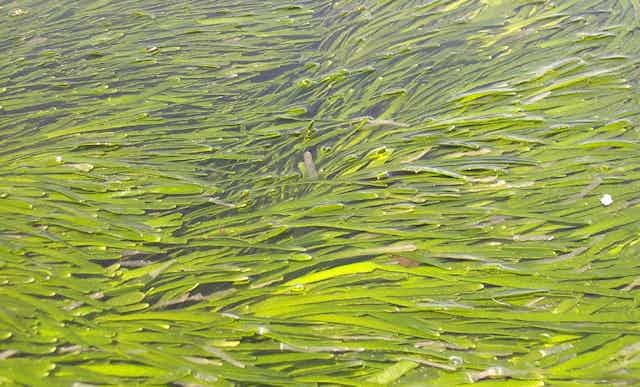In the 1990s some international animal rights and environment organisations instigated a concerted campaign to stop the hunting of pilot whales by Faroese people living in the northeast Atlantic.
The thousand-year-old, community-based pilot whale hunt that annually supplies approximately 30% of the islanders’ meat was criticised as being cruel, unsustainable and pandering to archaic cultural needs. The campaign said Faroese whaling, with its use of modern boats, must be stopped.
The campaign had little data, eventually ran its course and the Faroese continued with their sustainable community-based whaling institutions.
Recently an article on The Conversation made a claim that sounded very familiar to the Faroese anti-whaling campaign. The article was not about whaling but dugong hunting in Australia. It said “every year in Australian waters, thousands of dugongs are speared, dragged by the spear line and then drowned in a process that takes between 15 minutes and two hours”. This sounds much like animal rights campaign literature.
The article conflates two issues: the sustainability of dugong hunting by Indigenous hunters and the issue of animal cruelty. It skilfully deploys the emotive issue of animal cruelty, real or imagined, to make an argument that is not based on evidence or wildlife management. It calls for either the prohibition of dugong hunting or stricter regulation enforced by state authority.
While humane killing is a vital component of modern hunting it is unrelated to the sustainability of wildlife populations. There is no evidence that prohibition in very remote regions or stricter enforcement by largely absent state authorities will stop people hunting for food. So let us swim a little against the tide of opinion here and make a few comments to challenge the authors and contributors to this debate.
The management of common property resources, such as dugong, by Indigenous Australians has become a difficult and complex task since settler colonisation and “development” of Australia. Dugongs’ food is seagrass that grows mostly in shallow coastal waters, and development has made their lives precarious. They are vulnerable to damage to seagrass beds from trawling, build-up of silt caused by mining, poor catchment management or coastal development, boat strikes,entanglement in fishing nets and lines, coastal and marine pollution, as well as hunting.
The article provided no evidence of the impact of dugong hunting on dugong sustainability compared to all these other significant factors that Indigenous Australians have little control over.
These human impacts were all raised in the Australian Government’s Sustainable Harvest of Marine Turtles and Dugongs in Australia—A National Partnership Approach in 2005, yet were never fully addressed. This left Indigenous institutions and their common property resources vulnerable.
It is also imperative to acknowledge that Indigenous dugong hunters operate under Australian law that has been tested in the High Court. Yanner v Eaton 1999 found that section 211 (2) of the Native Title Act 1993 provided for the taking of native wildlife by Indigenous Australians for the purpose of satisfying personal, domestic or non-commercial purposes. If this right is to be extinguished then the Australian Government must negotiate and compensate the native title holders. It cannot be just wished away.
There are better ways to ensure the sustainability of hunted dugong populations - and to ensure humane methods are are used - than prohibition or top-down enforcement. Dugongs, like whales, are “natural flow resources”. Like other wildlife that humans use, they are renewable and can be managed to yield goods and services sustainably over extremely long periods of time.
Research by the late Elinor Ostrom, who won the Nobel Prize in Economics in 2009, and the new institutionalists, focused on how humans interact with common property resources to maintain long-term sustainable resource yields. Such research provides evidence of how societies have developed diverse community-based institutions for managing common property resources to avoid resource depletion.
The Australian state must collaborate with Indigenous hunting communities to strengthen their local institutions of resource management. This is vital. In some situations, dugong populations may have become an open access resource subject to poorly regulated hunting through post-colonial institutional failure such as weakened rules for common property exploitation and diluted community leadership and authority. Such instances of failure may have undermined very different collective common property management regimes that have historically proven very effective.
To build a better management regime, the Australian Government will need to develop or recognise clearly defined management boundaries and use rules adapted to local conditions by local people. They will have to set up collective-choice arrangements that allow resource users to participate in decision-making process (which will avoid costly and likely ineffective top-down enforcement), and independent monitoring accountable to the community of users. There will have to be graduated sanctions for anyone who breaks community rules such as using humane killing methods, and mechanisms for conflict resolution. And state authorities will have to recognise and resource self-determined institutions, and help with data sharing across ecological regions.
Building or reinvigorating common property institutions would move Indigenous hunters from being just users of natural resources to also being active resource managers, allowing them to change components of the hunt locked down by Australian law. This would ensure the future viability of dugong populations. There are already some sound practice examples among groups like the Bardi-Jawi sea rangers in the Kimberley region of Western Australia and over a dozen communities in the Torres Strait.
Instead of establishing new management regimes for remote coastal waters that are likely to fail, such institutional arrangements should be carefully considered and potentially replicated.

